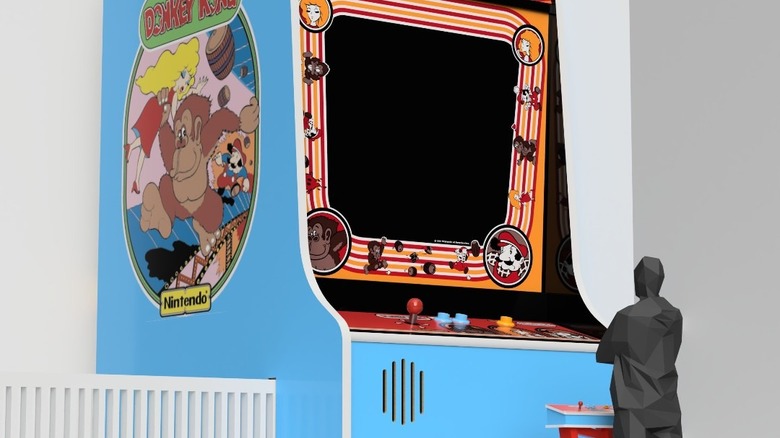How New York's 20-Foot-Tall Donkey Kong Arcade Machine Was Made Possible
Nintendo and classic gaming fans in the New York area will soon have the chance to play a "Donkey Kong" arcade game worthy of the lovable ape himself. Thanks to the Strong National Museum of Play in Rochester, New York and some help from Nintendo, a giant "Donkey Kong" cabinet is being built as a part of an expansion of the museum. Planned to be unveiled June 30, this cabinet will be fully playable to visitors and, apart from being almost 20 feet tall, will be as close to the original experience as is technically possible thanks to some hard work and cool technology.
The Strong Museum had already revealed that the cabinet would be using a classic controller setup and even an original game motherboard. Of course, to make this motherboard work with modern screens and with a giant display would require plenty of extra tinkering. Now, thanks to the museum's kind response to questions from Ars Technica, we know just how much effort went into making this tribute to "Donkey Kong" possible.
Even those without much technical knowledge will be able to appreciate the time, energy, and complex setup that was necessary to make the giant arcade game a reality.
Lots of tech was needed to translate the classic game for modern use
According to Ars Technica, construction of the cabinet began with an original "Donkey Kong" motherboard but several other pieces of hardware were needed to translate it to modern gaming. First, a Japanese Amusement Machine and Marketing Association (JAMMA) adapter was needed to connect the motherboard to a Home Arcade System Supergun. Essentially, the JAMMA adapter acts as a bridge between the original motherboard and the supergun, allowing it to read the motherboard's outputs. The supergun, meanwhile, translates these outputs, so they can be used by setups other than the classic arcade case. This would be vital with a giant arcade and screen as well as a controller that is normal-sized and set apart from the main cabinet.
Next, the difference in resolution had to be addressed. The original motherboard was built for approximately 240p output. This would look horrible on modern screens and even worse when blown up to a massive size. To get around this, a Framemeister XRGB-Mini was used to increase the resolution of the game without adding too much lag as a result. By essentially taking shots of each game frame, rapidly scaling them up to a higher resolution, and sending them out, the game looks as good as it does on classic screens, just on higher-end equipment and at giant size.
With all that accomplished, visitors can now have a "Donkey Kong experience "as close to the original as possible," but with a DK-sized twist. The barrel-throwing ape may be getting a classic look in the "Super Marios Bros." movie, but it's visitors to the Strong Museum that will get the true arcade classic this summer.


